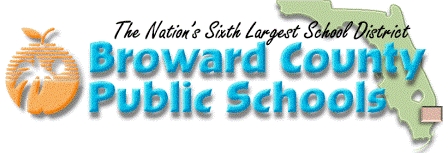|
||||
Multicultural Connections
May
![]()
Haitian Heritage Month
May is Haitian Heritage Month and celebrates Haitian history, culture and pride. There are many
reasons to celebrate Haitian Heritage Month, especially in our diverse Broward County community.
• To remember the unity reached by the Black and Mulatto officers at their
historic congress on May 15-18, 1803 to fight together against slavery inthe French colony of St. Domingue, and for its independence, which they
proclaimed on January 1, 1804.
• To celebrate the creation of the blue and red Haitian flag on May 18,1803.
• To honor Haitian General Toussaint Louverture who was born on May 20, 1743.
• To celebrate Haitian achievements and contributions across the globe.
• To raise awareness and understanding about Haitian culture and traditions.
• To strengthen the self-esteem of Haitian/Haitian American youth.
For more information: www.haitianheritagemonth.net
 Jewish American Heritage Month
Jewish American Heritage Month
The dream for a national month to celebrate Jewish contributions to American history began as an idea by one community in South Florida. Since then, the nation has come together to pass legislation in Congress and celebrate the Proclamation of Jewish American Heritage Month (JAHM) by the President of the United States.
For more information: www.jewishheritage.us

Asian Pacific American Heritage Month
In May 1990, President George H. W. Bush designated May to be Asian Pacific
American Heritage Month. May was chosen to commemorate the immigration
of the first Japanese to the United States on May 7, 1843, and to mark the
anniversary of the completion of the transcontinental railroad on May 10, 1869.
The majority of the workers who laid the tracks were Chinese immigrants. Asian
Pacific American Heritage Month is celebrated with community festivals,
government-sponsored activities, and educational activities for students.
For more information: www.AAPAHA.org

Teacher Appreciation Week
Teacher Appreciation Week (May 2-6) is the time to honor
educators and acknowledge the contributions they make to our lives.
For more information:
www.teacher-appreciation.info
www.nea.org/teachday
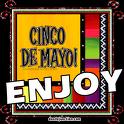
Cinco de Mayo - May 5th
Cinco de Mayo is a proud day for Mexicans who celebrate the victory over the French at the battle of Pueblo on May 5, 1862. The French army was better armed and three times larger, but the Mexican army still defeated them. Today there are parades,music and lots of celebrating!
For more information: www.theholidayzone.com/cinco
www.mexonline.com/cinco-de-mayo.htm
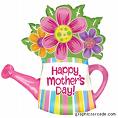
Mother's Day
Mothers are precious so it's not surprising that there is a day set aside to make
them feel special. Mother's Day has been around for many years. In the 1600s,
England used to have a day called Mothering Sunday when servants had the day
off to spend with their moms. In the US, both Julia Ward Howe and Anna Jarvis
campaigned separately to start a day for Mothers. In 1914, Mother's Day became
an official holiday thanks to these two women. For more information:
www.mothersdayworld.com
MOTHER IN DIFFERENT LANGUAGES
The role of mother is the same in each part of the globe and so is her importance for
the child. But there is a major difference in the term used to address her in different regions.
| Language | |
| English | Mom, Mummy, Mother |
| Hindi | Maa |
| German | Mutter |
| Urdu | Ammee |
| French | Mere |
| Italian | Madre |
| Portuguese | Mãe |
| Albanian | Mëmë; Nënë; Burim; Kryemurgeshë |
| Belarusan | Matka |
| Serbian | Majka |
| Czech | Abatyse |
| Dutch | Moeder; Moer |
| Greek | Màna |
| Hawaiian | Makuahine |
| Hungarian | Anya, Fu |
| Indonesian | Induk, Ibu, Biang, Nyokap |
| Spanish | Madre, Mama, Mami |
| Creole | Manman |

Haitian Flag Day – May 18th
Haiti’s flag is linked to a history of struggle for freedom and any offense to the flag is considered an offense to the country and its people. Haitian Flag Day commemorates the Haitian revolution. The Haitian national flag is a symbol of pride. Haitians worldwide set aside a special day to honor their flag. For information about the history of the Haitian flag: www.haitiantreasures.comHT-haitian_flag.day1.htm
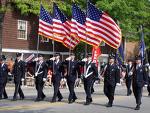
Memorial Day- Traditional: May 30th
Americans celebrate Memorial Day on the last Monday
in May. Thousands of people celebrate this holiday, which
goes back to the Civil War. In 1868, General John Logan
made Memorial Day an official holiday to honor those who
died in the Civil War. After World War I, the holiday was
changed to honor all Americans who died fighting in any war,
not just in the Civil War.
For more information: www.usmemorialday.org
April
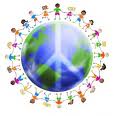 World Peace Month
World Peace Month
Start off the month by writing songs of peace or visiting this website that features songs for peacemaking activities. http://www.songsforteaching.com/store/product.php?productid=884
Even if you don’t want to sing the songs, you can use the song lyrics for choral reading, rap activities, and ideas for student writing activities.
Learn about Peace Poles and how your students can create a peace pole by visiting: http://www.peace-pole.com/peace_pole_history.htm

Jazz Appreciation Month
The Smithsonian Institution's National Museum of American History has led this
initiative and has enlisted a distinguished roster of federal agencies and departments,
non-governmental organizations, foundations, and broadcasting networks. The
U.S. Congress passed legislation that was signed by the President in August 2003,
Public Law 108-72, declaring “(1) the Smithsonian Institution’s National Museum
of American History should be commended for establishing a Jazz Appreciation
Month; and (2) musicians, schools, colleges, libraries, concert halls, museums, radio and
television stations, and other organizations should develop programs to explore, perpetuate, and
honor jazz as a national and world treasure.”
The concept is simple: designate one month for an annual public spotlight on jazz. Jazz
Appreciation Month (or JAM) is intended to draw public attention to the glories of jazz as both a
historical and a living treasure. The idea is to encourage musicians, concert halls, schools,
colleges, museums, libraries, and public broadcasters to offer special programs on jazz every April.
JAM is intended to stimulate the current jazz scene and encourage people of all ages to
participate in jazz—to study the music, attend concerts, listen to jazz on radio and recordings,
read books about jazz, and support institutional jazz programs.
Many people do not fully appreciate the joys, power, and glories of jazz. JAM is an effort by those
who are passionate about jazz to share it with those who are not as familiar with it. JAM will
encourage people to take jazz more seriously as a vital part of America’s cultural patrimony and
as a great gift to the world, as well as to have fun with it. For more information go to:
www.smithsonianjazz.org
Child Abuse Prevention Month 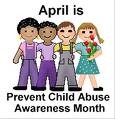
Everyone can do small things every day that help children to have healthy, safe lives. April is Child Abuse Prevention Month. The following are activities that show a child how much you care. Every activity is not necessarily developmentally appropriate for every child. So, be creative!
• Compliment a child's accomplishment.
• Read a book with a child.
• Fly a kite together.
• Involve a child in preparing a special meal.
• Catch a child doing something good.
• Remind your child that your love is not dependent on schoolwork.
• Leave a love note in your child's lunch bag.
• Ask your child's opinion on an issue that affects the family.
• Go to a playground or a park together.
• Tell a child about something funny that happened to you when you were a child.
• Bake and decorate a cake or make cookies together.
• Work on an art project together.
• Talk with a child about what to do in an emergency.
• Give a new responsibility—and a new privilege—to your child.
• Practice crossing the street safely.
• Donate old clothes, toys, or household items to charity together.
• Watch a video together.
• Help a child write a letter to his or her grandmother, favorite TV star, or the President.
• Have a picnic in the yard or the park.
• Choose something to count (trucks, dogs). Take a walk and keep track of how many you see.
• Plan an outing to a free outdoor concert or exhibit.
• Give your child a hug.
• Plant a flower or some herbs together.
• Go to a ball game together.
• Do a puzzle together.
• Tell your child that you love him or her.

Mathematics Awareness Month
For additional information:
www.nctm.org
www.mathaware.org/index.html
 National Poetry Month
National Poetry Month
Inaugurated by the Academy of American Poets in 1996, National Poetry Month is now held every April, when publishers, booksellers, literary organizations, libraries, schools and poets around the country band together to celebrate poetry and its vital place in American culture. Thousands of businesses and non-profit organizations participate through readings, festivals, book displays, workshops, and other events. National Poetry Month is a month-long, national celebration of poetry. The concept is to widen the attention of individuals and the media to the art of poetry, to living poets, to our complex poetic heritage, and to poetry books and journals of wide aesthetic range and concern. We hope to increase the visibility and availability of poetry in popular culture while acknowledging and celebrating poetry’s ability to sustain itself in the many places where it is practiced and appreciated.
For additional information: http://www.poets.org
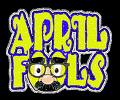
April 1st - April Fool’s Day
Unlike most of the other non-foolish holidays, the history of
April Fool's Day, sometimes called All Fool's Day, is not totally clear.
There really wasn't a "first April Fool's Day" that can be pinpointed
on the calendar. Some believe it sort of evolved simultaneously in several cultures from
celebrations involving the first day of spring. Pranks performed on April Fool's Day range from
the simple, (such as saying, "Your shoe's untied!), to the elaborate. Whatever the prank, the
trickster usually ends it by yelling to his victim, "April Fool!"
For additional info: http://wilstar.com/holidays/aprilfool.htm
Passover 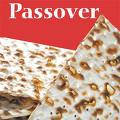
Passover is probably the best known of the Jewish holidays. Passover begins on the 15th day of the Hebrew month of Nissan. It is the first of the three major festivals with both historical and agricultural significance. Agriculturally, it represents the beginning of the harvest season in Israel. The primary observances of Passover are related to the Exodus from Egypt after 400 years of slavery. The name “Passover” refers to the fact that Jewish homes were “passed over” when the firstborn was being slayed in Egypt. Probably the most significant observance related to Passover involves the removal of chametz (leaven) from homes. This commemorates the fact that the Jews leaving Egypt were in a hurry, and did not have time to let their bread rise. The grain product eaten during Passover is called matzo. Mitzvah is unleavened bread, made simply from flour and water and cooked very quickly. This is the bread that the Jews made for their flight from Egypt. On the first and for some, the second night of Passover is a special family meal filled with ritual to remind us of the significance of the holiday. This meal is called a Seder, from a Hebrew root word meaning “order.” Passover lasts for eight days. For more information: http://www.jewishvirtuallibrary.org/jsource/Judaism/holidaya.html

April 22nd - Earth Day
Earth Day marks the anniversary of the birth of the modern environmental movement in 1970. Earth Day founder Gaylord Nelson, then a U.S. Senator from Wisconsin, proposed the first nationwide environmental protest "to shake up the political establishment and force this issue onto the national agenda." Earth Day 1970 turned that all around. On April 22, twenty million Americans took to the streets, parks, and auditoriums to demonstrate for a healthy, sustainable environment. Thousands of colleges and universities organized protests against the deterioration of the environment. Groups that had been fighting against oil spills, polluting factories and power plants, raw sewage, toxic dumps, pesticides, freeways, the loss of wilderness, and the extinction of wildlife suddenly realized they shared common values. It was a rare political alignment, enlisting support from Republicans and Democrats, rich and poor, city slickers and farmers, tycoons and labor leaders. The first Earth Day led to the creation of the United States Environmental Protection Agency and the passage of the Clean Air, Clean Water, and Endangered Species Acts.
For additional information:
http://www.suelebeau.com/environment.htm
http://www.abcteach.com/directory/seasonalholidays/earth_day/
http://ww2.earthday.net/
 Easter
Easter
Easter is celebrated as the religious holiday commemorating the resurrection of Jesus. But the celebrations of Easter have many customs and legends that are pagan in origin and have nothing to do with Christianity. It was first celebrated by the pagans around the vernal equinox, welcoming spring. Scholars, accepting the derivation proposed by the 8th-century English scholar St. Bede, believe the name Easter is thought to come from the Scandinavian "Ostra" and the Teutonic "Ostern" or "Eastre," both Goddesses of mythology signifying spring and fertility whose festival was celebrated on the day of the vernal equinox. Traditions associated with the festival survive in the Easter rabbit, a symbol of fertility. The Germans brought the symbol of the Easter rabbit to America. Colored Easter eggs, originally painted with bright colors to represent the sunlight of spring were used in Easter egg rolling contests or given as gifts. From the earliest times, the egg was a symbol of rebirth in most cultures. Eggs were often wrapped in gold leaf or, if you were a peasant, colored brightly by boiling them with the leaves or petals of certain flowers. Today, children hunt colored eggs and place them in Easter baskets along with the modern version of real Easter eggs -- those made of plastic or chocolate candy.
For more information:
http://www.history.com/minisites/easter/
http://holidays.kaboose.com/easter

Administrative Professional's Day
Administrative Professional’s Week is the last full week of April, with
Wednesday of that week being designated Administrative Professional’s Day.
Administrative Professional’s Day recognizes and celebrates the work of
secretaries, administrative assistants, and other office professionals for their growing
and diverse contributions to the workplace. In 2000 the name was changed from
"Professional Secretaries Day" to "Administrative Professional’s Day." The name
change was made to keep in step with the changing job titles and expanding
responsibilities of today's administrative workforce.
For more information:
http://www.calendar-updates.com/info/holidays/us/admin.aspx
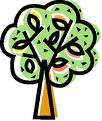
April 29th - Arbor Day
Arbor Day is a nationally celebrated observance that encourages tree planting and care. National
Arbor Day was founded by J. Sterling Morton in 1872, and is celebrated on the last Friday in April.
For additional information go to: http://www.arborday.org/arborday/classroom.cfm
February
Chinese New Year 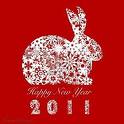
Gung Hay Fat Choy! This is the Chinese greeting for the New Year in China. Chinese New Year is a festive holiday celebrated for about two weeks and is observed by the Chinese, Koreans, and Vietnamese. A different animal symbolizes each year. It starts with the New Moon on the first day of the New Year and ends on the full moon 15 days later. The 15th day of the New Year is called the Lantern Festival, which is celebrated at night with lantern displays and children carrying lanterns in a parade. People dress up in costumes, exchange food and gifts, visit family members, and remember ancestors. They settle all business accounts and forget all grudges. http://crafts.kaboose.com/holidays/chinese_new_year.html
 February 11th - Make a Friend Day
February 11th - Make a Friend Day
Do you have enough friends? The answer should be no. No matter how many friends we have, more of them increase our wealth. That's because friends are one of life's valuable assets. Make a Friend Day is a great opportunity to meet someone new, or do something to make a new friend. Making a new friend can be easier to do than you think. There must be many ways to make new friends. It often helps by smiling and just being friendly or helpful. Spend Make a Friend Day just being friendly, and by doing special or nice things for others.

February 14th - Valentine’s Day
February has long been a month of romance and across the country, candy, flowers, and gifts are exchanged between loved ones. More than 188 million Valentine's Day cards are exchanged annually, making Valentine's Day the second-most popular greeting-card-giving occasion. This total excludes packaged kids valentines for classroom exchanges. For additional information: www.history.com/content/valentine/
February 15th to 21st - Random Acts of Kindness Week
 Kindness is a character trait that needs to be practiced on an ongoing basis. Place a ‘Kindness Jar’ in the classroom. When a student observes an act of kindness, he/she writes down what they have seen on a slip of paper and place it in the ‘Kindness Jar’. Periodically, the slips are posted on a big paper jar on the wall near the entry to the classroom for all in the school to read. Visit the Random Acts of Kindness Foundation website to view lesson plans for all academic levels.
Kindness is a character trait that needs to be practiced on an ongoing basis. Place a ‘Kindness Jar’ in the classroom. When a student observes an act of kindness, he/she writes down what they have seen on a slip of paper and place it in the ‘Kindness Jar’. Periodically, the slips are posted on a big paper jar on the wall near the entry to the classroom for all in the school to read. Visit the Random Acts of Kindness Foundation website to view lesson plans for all academic levels.
http://www.actsofkindness.org/classroom/plans/
President’s Day
 Presidents' Day is celebrated on the third Monday in February to honor two of our greatest presidents: Abraham Lincoln and George Washington. This is a good time to also remember the First Ladies, their support and the contributions they have made. Visit these websites for lesson plans, activities and biographies:
Presidents' Day is celebrated on the third Monday in February to honor two of our greatest presidents: Abraham Lincoln and George Washington. This is a good time to also remember the First Ladies, their support and the contributions they have made. Visit these websites for lesson plans, activities and biographies:
http://holidays.kaboose.com/presidents-day/presidents-day.html
www.alphabet-soup.net/hol/president.html
http://edsitement.neh.gov/view_lesson_plan.asp?ID=337
http://k6educators.about.com/gi/dynamic/offsite.htm?site=http://www.whitehouse.gov/history/firstladies

February 26th- Tell a Fairy Tale Day
There are numerous folktales and mythological legends that show how friends and friendship have been valued since the beginning of the civilized world. Ask your media specialist to recommend titles of multicultural tales that focus on friendship.
Check out this website on How to Choose the Best Multicultural Books: http://content.scholastic.com/browse/article.jsp?id=3757
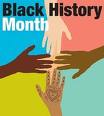
Black History Month
During February, teachers and students all over the United States will be participating in activities that commemorate Black History Month.
Black History Month is a federally recognized, nationwide celebration that provides the opportunity for all Americans to reflect on the significant roles that African-Americans have played in the shaping of U.S. history.
Dr. Carter G. Woodson, considered a pioneer in the study of African-American history, is given much of the credit for Black History Month, and has been called the "Father of Black History." The son of former slaves, Woodson spent his childhood working in coal mines and quarries. He received his education during the four-month term that was customary for black schools at the time. At 19, having taught himself English fundamentals and arithmetic, Woodson entered high school, where he completed a four-year curriculum in two years. He went on to receive his Master's degree in history from the University of Chicago, and he eventually earned a PhD from Harvard. Disturbed that history textbooks largely ignored America's black population, Woodson took on the challenge of writing black Americans into the nation's history. To do this,
Woodson established the Association for the Study of Negro Life and History. He also founded the group's widely respected publication, the Journal of Negro History. In 1926, he developed Negro History Week. Woodson believed that "the achievements of the Negro properly set forth will crown him as a factor in early human progress and a maker of modern civilization."
Woodson chose the second week of February for the celebration because it marks the birthdays of two men who greatly influenced the black American population: Frederick Douglass (February 14), an escaped slave who became one of the foremost black abolitionists and civil rights leaders in the nation, and President Abraham Lincoln (February 12), who signed the Emancipation Proclamation, which abolished slavery in America's confederate states. In 1976, Negro History Week expanded into Black History Month.
The month is also sometimes referred to as African-American Heritage Month.
Source: http://blackhistorypages.net/pages/cgwoodson.php
http://www.chipublib.org/002branches/woodson/woodsonbib.html
![]()
 The following websites might provide some ideas for observing Black History Month:
The following websites might provide some ideas for observing Black History Month:
http://www.cnn.com/EVENTS/black_history/index.html
http://www.timeforkids.com/TFK/specials/bhm/0,8805,97217,00.html
http://www.teachervision.fen.com/black-history-month/teacher-resources/6602.html
http://www.kn.pacbell.com/wired/BHM/index.html
http://teacher.scholastic.com/activities/bhistory/
http://history.com/minisites/blackhistory/
http://biography.com//blackhistory/
http://teachingtolerance.org
Thank you to Pembroke Pines Charter High School for sharing their Multicultural Newsletter dedicated to African American History.
January
January heralds the beginning of a new calendar year and a time for New Year’s resolutions. Listed below are several national themes and celebrations observed in January that provide opportunities for teachers and students to begin making multicultural connections.
January 1st - New Year’s Day 
New Year's Day is celebrated on January 1st in the Gregorian calendar. It is a time of renewal and many people resolve to break bad habits and begin good ones. These resolutions require people to examine their lives over the last twelve months and plan for the coming year. The earliest documented New Year celebration occurred in Mesopotamia around 2000 B.C.E. The celebrations typically occurred in the middle of winter in an attempt to ensure the return of spring. Ancient Romans exchanged gifts of sacred tree branches, and, later on, gold covered coins imprinted with the face of Janus. Janus had two faces: one looked forward and one looked backward.
In the United States, some of the early colonists fired guns into the air and frequented the local taverns. Others attended church or open houses. The current celebration includes parades such as the Tournament of Roses parade and college football bowl games.
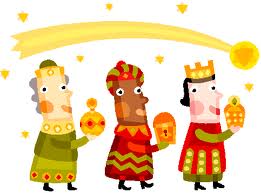
January 6th - Three Kings Day
Celebrated twelve days after Christmas, Three Kings Day
is often viewed as the last day of the Christmas season
(the end of the 12 days of Christmas) and comes with its
own traditions, rituals and symbols. Carolers are going from
house to house and in many homes the Christmas tree is
taken down and in some areas is burnt in a big bonfire.
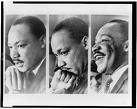
Dr. Martin Luther King, Jr. Day
In 1983, the 98th Congress passed Public Law 98-144 to honor the birthday of Martin Luther King, Jr. This was first celebrated as a Federal legal holiday on January 20, 1986 and has been observed on the third Monday of January since that time. Congress' intention was that theholiday "serve as a time for Americans to reflect on the principles of racial equality and nonviolent social change espoused by Martin Luther King, Jr." (36 USC, Section
169j).
King was born on January 15, 1929 and gained national prominence during the Montgomery Bus Boycott. King's name became virtually synonymous with the civil rights movement of the late 1950's and early 1960's. He was at the center of almost every major demonstration and was arrested many times. In April 1963, he composed Letter from the Birmingham Jail. Later that year, King delivered his most famous speech when he told participants in the March on Washington "I have a dream."
During the next few years, King and the movement realized many successes including the passage of the 1964 Civil Rights Act, the ruling of the poll tax as unconstitutional, and the desegregation of schools that had ignored the decision reached in Brown v. Board of Education. In 1967, King began to focus some of his energy on the war in Vietnam, a move that many believed to be a betrayal of the civil rights cause. In early April 1968, he traveled to Memphis, Tennessee to march in support of local sanitation workers. On the evening of April 3, he delivered his prophetic "I've Been to the Mountaintop" speech. Dr. King was assassinated the next morning while he stood on the balcony of his room at the Lorraine Motel. King is buried at what is now the Martin Luther King, Jr. National Historic Site in his hometown of Atlanta, Georgia. The site includes the Ebenezer Baptist Church where he was a co-pastor with his father.
For additional information and activities:
www.suelebeau.com/blackhistory.htm#king
www.holidays.net/mlk/
www.education-world.com/a_lesson/lesson046.shtml
www.teachnology.com/teachers/lesson_plans/holidays/mlk/
http://edsitement.neh.gov/view_lesson_plan.asp?id=326
http://webtech.kennesaw.edu/jcheek3/mlk.htm
 Caribbean Heritage Month
Caribbean Heritage Month
During Caribbean-American Heritage Month, we celebrate
the great contributions of Caribbean Americans to the fabric
of our Nation, and we pay tribute to the common culture and
bonds of friendship that unite the United States and the Caribbean countries.
Our Nation has thrived as a country of immigrants, and we are more vibrant and
hopeful because of the talent, faith, and values of Caribbean Americans. For centuries,
Caribbean Americans have enriched our society and added to the strength of America.
Over five million Americans proudly share their Caribbean heritage. They have been
leaders in government, sports, entertainment, the arts, and many other fields.
For more information:
http://www.smithsonianglobalsound.org/cultural_heritage_06.aspxhttp://www.lessonpla
net.com/search/Geography/Regional_Resources/Caribbean

Florida Jewish History Month
The Jewish Museum of Florida initiated the 2003 legislation that designated this month to honor the indelible imprint of Floridian Jews on our State's history. Florida's greatest asset is its people. Diverse cultures have enriched the State since early times. Jews have actively participated in shaping the destiny of Florida since they were first allowed to settle in 1763. Florida Jewish History Month is a time to learn how Jews have been involved in enriching the lives and dreams of all Floridians.
For more information: http://www.jewishmuseum.com/fjhmfactsheet.html
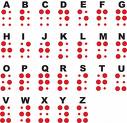
National Braille Literacy Month
This theme provides an opportunity to focus on men and women such as Helen Keller, Ann Sullivan and Louis Braille who overcame obstacles to become role models and champions of human rights for the handicapped. A Girl Named Helen Keller by Margo Lundell was sent to all elementary schools. Check out our website for the reading guide and activities for the book.
www.broward.k12.fl.us/esol/Eng/Multicultural/index.html
For more information:
http://www.educationworld.com/a_tsl/archives/00-1/lesson0013.shtml
http://teacherlink.ed.usu.edu/tlresources/units/Byrnes-famous/keller.html

National Soup Month
Take an opportunity to learn how some cultural
practices related to food and beverages are
universal. These themes provide a perfect
opportunity to practice FCAT preparation skills
such as comparing and contrasting using graphic organizers.
For more information:
http://www.soupsong.com/icustom.html
December
December is Human Rights month.
What better way to celebrate human rights than by recognizing
the traditions and special multicultural holiday celebrations that take place this time of year? Learning
about these special celebrations can be beneficial to both teachers and students. Teachers are
validating the cultural customs celebrated by their students and incorporating multicultural materials
and information into the curriculum, as students process the information and use it to practice
research skills and FCAT reading and writing skills. Here are some ideas:
• Using graphic organizers, have students compare and contrast the holiday customs listed
below.
• Print the information listed below on separate cards. Have students practice finding the main
ideas and supporting details.
• Ask students to prepare book talks based on one of the events listed below.
• Invite students to write about their own special holiday tradition.
• Ask students to make cross-cultural connections (Examples: luminarios, Advent calendars,
poinsettias).
• Ask students to locate stories and books about different celebrations. Read aloud or share
within reading circles.
For additional information:
http://www.newberry.k12.sc.us/InstructionalLinks/Holidays/DecemberCelebrations.htm
http://teacher.scholastic.com/lessonrepro/lessonplans/profbooks/decceleb.htm
http://www.holidays.net/chanukah/
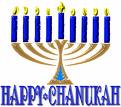
Chanukah
Chanukah is the Jewish Festival of Lights celebrated in countries all over the world. Every year between the end of November and the end of December, Jewish people around the world celebrate the holiday of Chanukah, the Festival of Lights. Chanukah begins on the 25th day of the Hebrew month of Kislev, but the starting date on the western calendar varies from year to year. The holiday celebrates the events that took place over 2,300 years ago in the land of Judea, which is now Israel.
In 165 B.C. there was a great battle between the Maccabees and the Syrians. The Jews won the battle and when they went to their temple, they found that the Syrians had allowed their sacred light to go out. They only had oil for one day. The oil lamp was filled and lit. Then a miracle occurred as the tiny amount of oil stayed lit not for one day, but for eight days.
Jews celebrate Chanukah to mark the victory over the Syrians and the rededication of the Jerusalem Temple. The Festival of the Lights, Chanukah, lasts for eight days to commemorate the miracle of the oil. The word Chanukah means rededication.
In America, families celebrate Chanukah at home. They give and receive gifts, decorate the house, entertain friends and family and eat special foods. Families gather around a special candleholder called a menorah. There are nine candles in the menorah. One of the candles is used to light the
other eight candles, which stand for the eight days that the oil kept burning.
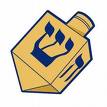
Chanukah Fun: The Dreidel Game
Students create dreidels, traditional Chanukah toys, from common materials and play
the dreidel game!
* Tell students that they will create their own dreidels and learn to play the dreidel game.
* Print directions for making paper dreidels; directions are available online. You might also let
students make dreidels from milk cartons or boxes.
* After students create their dreidels, have students learn the rules for the dreidel game, using
teacher-selected resources or printouts
* Organize students into small groups to play the dreidel game.
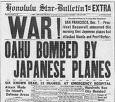
December 7th - Pearl Harbor Day Observance
It was early morning, December 7, 1941. As the sun was just beginning to rise in Oahu, Hawaii, a fleet of Japanese naval air forces was taking off from aircraft carriers in various locations in the Pacific Ocean. Just as many of the islanders were waking up for breakfast, it happened. The Japanese air fleet had arrived with a vengeance. No one was prepared for what was occurring. Pearl Harbor, the United States' center for military action in the Pacific Ocean, was almost completely destroyed. Anger toward the Japanese spread quickly throughout the entire country, and this anger led to the United States’ entry into World War II.
December 22nd - Winter Solstice 
The Winter Solstice is the day when the distance between the Tropic of Capricorn and the sun is the shortest. Because of the earth's tilt, the Northern Hemisphere is leaning farther away from the sun than at any other time during the year. This makes the Winter Solstice the shortest day in the Northern Hemisphere where it marks the beginning of winter. Because ancient cultures were unaware of the changes in the Earth's position, they feared that the sunlight would never return. To bring it back, they engaged in many celebrations and ceremonies. Hundreds of years ago, a Roman culture celebrated its major festival on the Winter Solstice. When Julius Caesar instituted a new calendar in Rome, the festival fell on December 25, a date that was retained for many years. About 1600 years ago, Pope Julius I chose this date for Christmas in order to replace the pagan tradition with a Christian one.

December 25th - Christmas
Christmas is celebrated in many different ways around the world.
Christmas is a popular secular holiday that focuses upon the many
versions of St. Nicholas and other traditions such as Christmas
carols, mistletoe, Christmas cards, and gift giving. Children write
letters to Santa Claus and tell him what they'd like to receive for
Christmas. With help from his elves, Santa prepares the gifts and
then, on Christmas Eve, he leaves the North Pole in his reindeerguided
sleigh. Rudolph leads the reindeer across the sky and onto
each housetop. Santa carries the gifts down the chimney at each
home and places them under the Christmas tree. Usually, the
children of the house leave cookies and milk for Santa.
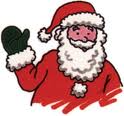 Santa Claus is known by other names in different parts of the world. For example, in Germany, he is known as Kris Kringle while the French call him Pere Noel. Many people celebrate Christmas with elements of both the religious observances and the secular rituals.
Santa Claus is known by other names in different parts of the world. For example, in Germany, he is known as Kris Kringle while the French call him Pere Noel. Many people celebrate Christmas with elements of both the religious observances and the secular rituals.

How Many Ways Can You Say Merry Christmas?
Students create a multicultural holiday bulletin board map using research. Students study saying Merry Christmas in different languages. Students correctly locate the countries on a world map.
Materials Needed - World map, bulletin board art supplies, 3-inch by 5-inch index cards (or colored paper cut to size).
* Prior to lesson: Cover a bulletin board with a world map, or use a projector to project a world map on the bulletin board and trace the outline.
* Gather enough index cards for each student in the class to have one. Write the names of languages and their corresponding countries on the cards, one language and country per card. Put the cards in a bag or a box.
For younger students:
* Begin the lesson by telling students how to say Merry Christmas in Spanish (Feliz Navidad). Point
out on a world map some of the countries where people say Merry Christmas in Spanish.
* Tell students that they will learn to say Merry Christmas in other languages. Provide each student with a card.
* Organize students into groups of three to four.
* Ask each student to find Merry Christmas in the language on his or her card. Students will write the phrases on the cards.
* When everyone has finished, help students say their phrases and locate the countries on a map or globe. Let students put their finished cards around the bulletin board to create learning "border." Each student might run a length of yarn between his or her card and the country on the map.
For older students:
* Assign each student three or four languages. Give students cards with just the name of a language.
Have students identify the country of the language and write the country's name on the card. Let students work individually to find the Merry Christmas phrases in their assigned language and locate the countries on a world map.
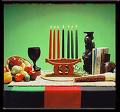 December 26th – Kwanzaa
December 26th – Kwanzaa
Kwanzaa is a holiday celebrated by many African-Americans. It is held December 26th through January 1st. It was started in 1966 by Dr. Maulana Karenga, Professor at the California State University, Long Beach, California. A non-religious holiday, Kwanzaa celebrates African-American heritage, pride, community, family, and culture. The seven-day festival begins the day after Christmas and ends on New Year's Day. Before the Kwanzaa celebration begins, a straw mat (Mkeka) is placed on a table. A Kinara (seven-candle candle holder) and Mshumaa (candles) is made up of a single black candle and 3 red and 3 green candles and are placed on the Mkeka along with Muhindi (ears of corn) and the Kikombe Cha Umoja (unity cup). The seven candles represent the seven principles of how to live a good life. The black candle in the middle represents the African-American
people, the red candles represent their struggles, and the green ones represent their vision for thefuture. Each day of Kwanzaa focuses upon one of the seven principles. After a candle-lighting ceremony, participants discuss what the principle means to them. Gifts are also exchanged during this time. A Karamu (feast) featuring traditional food, a ceremony honoring ancestors, music, and dancing is held on December 31.
There is one principle for each of the seven days of Kwanzaa in the following order:
* Umoja (unity)-to strive for and maintain unity in the family, community, nation and race.
* Kujichagulia- (self-determination) to define ourselves, name ourselves, create for ourselves and speak for ourselves.
* Ujima- (collective work and responsibility) to build and maintain our community together and make our sister's and brother's problems our problems and to solve them together.
* Ujamaa- (cooperative economics) to build and maintain our own stores, shops, and other businesses together.
* Nia- (purpose) to make our collective vocation the building of our community to restore our people to their traditional greatness.
* Kuumba- (creativity) to do as much as we can to leave our community more beautiful and beneficial than we inherited it.
* Imani- (faith) to believe with our hearts in our people, our parents, our teachers, our leaders and the righteousness and victory of our struggle.
Definitions
| Harambee (Let us all work together) | Mishumaa Saba (seven candles) |
| Nguzo Saba (seven principles) | Mkeka (mat, usually straw) |
| Tambiko (libation from the Unity Cup) | Mazao (fruits, nuts, vegetables) |
| Umoja (unity, the black center candle) | Kinara (candle holder) |
| Vibunzi (ear of corn) | Kikombe Cha Umoja (unity cup) |
| Zawadi (gifts) | Karamu (the feast) |

December 31st - New Year's Eve
New Year's Eve is the last day of the calendar year, or December 31 in the Gregorian calendar. Since
most of the world uses this calendar, New Year's Eve is celebrated around the globe.
Celebrations on this night typically include going to parties or gathering in public places. One of the
most famous gatherings occurs at Times Square in New York City. At 11:59:00 p.m., a six-foot
shimmering ball (actually an apple) is lowered 70 feet in sixty seconds. When the apple reaches its
destination at midnight, bells ring, confetti is tossed, and everyone shouts "Happy New Year!" This
tradition began in 1907 after New York City outlawed firecrackers for New Year's Eve. The singing of
Auld Lang Syne and drinking a toast to the New Year follow the lowering of the ball.
For Secondary Students

What are Human Rights?
Human Rights Defined
While some dictionaries define the word right as "a privilege," when used in the context of "human rights," we are talking about something more basic.
Every person is entitled to certain fundamental rights, simply by the fact of being human. These are called "human rights" rather than a privilege (which can be taken away at someone's whim).
They are "rights" because they are things you are allowed to be, to do or to have. These rights are there for your protection against people who might want to harm or hurt you. They are also there to help us get along with each other and live in peace.
Many people know something about their rights. Generally they know they have the right to food and a safe place to stay. They know they have a right to be paid for the work they do. But there are many other rights.
When human rights are not well known by people, abuses such as discrimination, intolerance, injustice, oppression and slavery can arise.
Born out of the atrocities and enormous loss of life during World War II, the United Nations Universal Declaration of Human Rights was signed in 1948 to provide a common understanding of what everyone's rights are. It forms the basis for a world built on freedom, justice, and peace.
For additional information:
http://www.youthforhumanrights.org/?source=gaw&gclid=CJaA0ZvDxqUCFQu87Qodgn67ZA
November

Days of the Dead (Los Dias de Los Muertos)
November 1st and 2nd
Every autumn monarch butterflies, which have summered north in the United States and Canada, return to Mexico for the winter protection of the fir trees. The local inhabitants welcome back the returning butterflies, which theybelieve bear the spirits of their departed. Los Dias de los Muertos, the Days of the Dead, is a traditional Mexico holiday honoring the dead. It is celebrated
every year at the same time as Halloween and the Christian holy days of All Saints Day and All Souls Day (November 1st and 2nd). Los Dias de los
Muertos is not a sad time, but instead a time of remembering and rejoicing. Skeletons and skulls are found everywhere. There are chocolate skulls, marzipan coffins, and white chocolate skeletons. Special loaves of bread arebaked, called pan de muertos,
For more information: www.holidays.net

Election Day
Why is Election Day the Tuesday after the first Monday in November? For much of our history, America was a predominantly agrarian society. Lawmakers therefore took into account that November was perhaps the most convenient month for farmers and rural workers to be able to travel to the polls. The fall harvest was over, but in the majority of the nation the weather was still mild enough to permit travel over unimproved roads.
Why Tuesday?
Since most residents of rural America had to travel a significant distance to the county seat in order to vote, Monday was not considered reasonable since many people would need to begin travel on Sunday. This would, of course, have conflicted with Church services and Sunday worship.
Why the first Tuesday after the first Monday?
Lawmakers wanted to prevent Election Day from falling on the first of November for two reasons. First, November 1st is All Saints Day, a Holy Day
Roman Catholics. Second, most merchants were in the habit of doing their books from the preceding month on the 1st. Apparently, Congress was worried that the economic success or failure of the previous month might prove an undue influence on the vote!
Source: Federal Election Commission
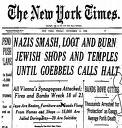
Kristallnacht (Night of the Broken Glass) – November 9th
The origin of this observance goes back to the late 1930s. Under Adolf Hitler’s leadership as chancellor of Germany, the Nuremberg Laws were passed that included limiting the right of Jewish citizens in Germany to religious observance, to attend school, to earn a living, to ride streetcars, and to visit parks. On November 9,1938, Nazi storm troopers, members of the Nazi secret police, and the Hitler youth went on a rampage in Jewish neighborhoods in Germany and Austria breaking into Jewish homes and businesses smashing windows and beating or killing those inside. They destroyed synagogues (Jewish places of worship) and holy books.
The night of November 9-10 became known as Kristallnacht (Night of Broken Glass. It is believed to be the catalyst event that served as the beginning of the Holocaust. Kristallnacht is observed throughout the world, often in synagogues and Jewish cemeteries.
For more information: www.ushmm.org
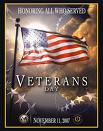
Veterans Day – November 11th
In 1918, on the eleventh hour of the eleventh day in the eleventh month, the world rejoiced and celebrated. After four years of bitter war, an armistice was signed. The "war to end all wars" was over.
Armistice Day officially received its name in America in 1926 through a Congressional resolution. It became a national holiday 12 years later by similar Congressional action. If the idealistic hope had been realized that World War I was "the War to end all Wars," November 11 might still be called Armistice Day. But only a few years after the holiday was proclaimed, war broke out in Europe. Realizing that peace was equally preserved by veterans of WW II and Korea, Congress was requested to make this day an occasion to honor those who have served America in all wars. In 1954 President Eisenhower signed a bill proclaiming November 11 as Veterans Day. A law passed in 1968 changed the national commemoration of Veterans Day to the fourth Monday in October. It soon became apparent, however, that November 11th was a date of historic significance to many Americans. Therefore, in 1978 Congress returned the observance to its traditional date.
The Story of Veterans Day
• November 11th is Veterans Day. A veteran is a soldier who has servedhis/her country.
• Thirty-five countries fought in World War I. They fought for five years, from 1914 to 1918. The United States fought in the war from 1917 to 1918. Finally the countries stopped fighting. The leaders signed an armistice. They signed the armistice on the eleventh hour of the eleventh day of the eleventh month. The armistice meant that the war was over. Americans were very happy to hear about the armistice. No more soldiers would die in the war. The soldiers could come home. People went out into the streets and laughed and danced. They blew horns and whistles and rang bells. They sang songs. They thought that there would never be another war.
• President Wilson made November 11th a holiday to remember the end of the war. The holiday was called Armistice Day. At eleven o'clock in the morning, everyone stopped doing whatever they were doing. People were completely silent for one minute. This minute was to remember all the soldiers who have died in wars.
• The body of an unknown soldier was brought to America from the cemetery in France. His body was buried in a tomb at Arlington National Cemetery. It was called the Tomb of the Unknown Soldier.
• The U.S. was in three more wars: World War II, the Korean War, and the Vietnam War. The name of the holiday was changed to Veterans Day.
• The bodies of three more unknown soldiers were brought to the cemetery. On Veterans Day, there are special services at the Tomb of the Unknowns.
• Americans remember and honor all the veterans.
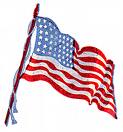
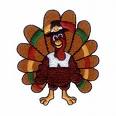
Thanksgiving
In the United States, Thanksgiving is always celebrated on the fourth Thursday of November. The Pilgrims who sailed to America were originally members of the English Separatist Church. Before going to America they had fled to Holland to escape religious persecution. Although, in Holland, they enjoyed more religious tolerance, but they eventually became disillusioned with the Dutch way of life. In the hope of a better life in, they took the help of a London stock company to move to America. They reached Plymouth in 1620. There, they had to face a terrible winter. Forty-six of the original 102 had died by the next fall. But fortune turned in their favor and the harvest of the next year was bumper. And the remaining colonists decided to celebrate with a feast -- including 91 Indians who had helped the Pilgrims survive their first year. It is believed that the Pilgrims would not have made it through the year without the help of the natives. The feast was more of a traditional English harvest festival than a true "thanksgiving" observance. It lasted three days. Governor William Bradford sent "four men fowling" after wild ducks and geese. It is not certain that wild turkey was part of their feast. However, it is certain that they had venison. The term "turkey" was used by the Pilgrims to mean any sort of wild fowl. Another modern staple at almost every Thanksgiving table is pumpkin pie. But it is unlikely that the first feast included that treat. The supply of flour had been long diminished, so there was no bread or pastries of any kind. However, they did eat boiled pumpkin, and they produced a type of fried bread from their corn crop. There was also no milk, cider, potatoes, or butter. There were no domestic cattle for dairy products, and the newly discovered potato was still considered by many Europeans to be poisonous. But the feast did include fish, berries, watercress, lobster, dried fruit, clams, venison, and plums. This "thanksgiving" feast was not repeated the following year. But in 1623, during a severe drought, the pilgrims gathered in a prayer service, praying for rain. When a long, steady rain followed the very next day, Governor Bradford proclaimed another day of Thanksgiving, again inviting their Indian friends. It wasn't until June of 1676 that another Day of Thanksgiving was proclaimed. On June 20, 1676, the governing council of Charlestown, Massachusetts, held a meeting to determine how best to express thanks for the good fortune that had seen their community securely established. By unanimous vote they instructed Edward Rawson, the clerk, to proclaim June 29 as a day of thanksgiving. It is notable that this thanksgiving celebration probably did not include the Indians, as the celebration was meant partly to be in recognition of the colonists' recent victory over the "heathen natives". October of 1777 marked the first time that all 13 colonies joined in a thanksgiving celebration. It also commemorated the patriotic victory over the British at Saratoga. But it was a one-time affair. George Washington proclaimed a National Day of Thanksgiving in 1789, although some were opposed to it. There was discord among the colonies, many feeling the hardships of a few Pilgrims did not warrant a national holiday. And later, President Thomas Jefferson scoffed at the idea of having a day of thanksgiving. It was Sarah Josepha Hale, a magazine editor, whose efforts eventually led to what we recognize as Thanksgiving. Hale wrote many editorials championing her cause in her Boston Ladies' Magazine, and later, in Godey's Lady's Book. Finally, after a 40-year campaign of writing editorials and letters to governors and presidents, Hale's obsession became a reality when, in 1863, President Lincoln proclaimed the last Thursday in November as a national day of Thanksgiving. After Lincoln every president proclaimed Thanksgiving. The date was changed a couple of times, most recently by Franklin Roosevelt, who set it up one week to the next-to-last Thursday in order to create a longer Christmas shopping season. Public uproar against this decision caused the president to move Thanksgiving back to its original date two years later. And in 1941, Thanksgiving was finally sanctioned by Congress as a legal holiday, as the fourth Thursday in November.

Multicultural Thanksgiving and Harvest Celebrations
It’s that time of year again, to feast on Indian rice cakes and spicy mashed potato balls, Mexican burritos and enchiladas, Columbian empanadas and guava pastries, Italian lasagna and Jamaican meat pies, turkey and pumpkin pie.
It’s Thanksgiving!
It is important to remember is that we live in a
multicultural society where people from many cultural
backgrounds celebrate the traditions associated with
harvest festivals and celebrations of Thanksgiving. Probably, the biggest difference
between the traditional American Thanksgiving and other harvest celebrations is
what people enjoy eating on those special days. These special holidays and
traditions provide an opportunity for schools and teachers to promote cultural
awareness and understanding.
What types of activities are culturally sensitive and appropriate? When choosing a
project or activity the following should be taken into consideration:
• Think about how you are using symbols to represent a person’s culture. For
example, dressing Indians, pilgrims, and turkeys in someone’s native attire,
while cute, may be offensive.
• Be aware of the diversity within your particular school environment or
individual classroom, and plan activities that celebrate individual practices.
• Invite students to share information about their celebrations and traditions
that validate their cultural heritage.
• Celebrate diversity, not divisiveness.
Multicultural Celebrations Thanksgiving and Harvest Celebration Activities
• Using a symbol typical of one culture, like a Thanksgiving turkey, and
associating it with characteristics of another culture can sometimes be
culturally insensitive and even offensive to some people. Instead of
dressing up turkeys in native attire, think about turning the symbol into a
graphic organizer in which information is displayed. Place the name of the
country or culture you are highlighting in the center of the turkey. Print
facts about the country or celebration on paper feathers. Display the
completed turkeys for all the students to read and learn new facts or
information about different countries and cultures.
Variations: Use leaf patterns or handprints as feathers.
• At this time of year we think about the first Thanksgiving celebrated in
America. It is a perfect opportunity to discuss the great cultural
exchange that took place between the natives in the Americas and the
Europeans. Talk about the foods and animals that were brought to the
Americas by the explorers such as horses, pigs, cows, oats and lettuce, and
foods the Europeans had never seen before like peanuts, pumpkins, beans,
corn and potatoes. Have students find out about the origins of the food
associated with Thanksgiving and harvest celebrations. Write down the
information on fruit and vegetable cutouts and arrange them in a
cornucopia basket.
• Bookmaking is a project that provides another way to record the special
traditions and customs associated with the harvest and thanksgiving
celebrations of another country or culture.
Variation: Have students make cards or books that compare and contrast
how their particular celebration differs from the traditional “American
Thanksgiving.”
• Autumns leaves cascading from the ceiling, or displayed in windows and on
bulletin boards provide ideal templates for recording facts and information
related to weather patterns, seasonal changes and the geographical
features of different countries.
Variation: Have students create a mobile or a wreath of amazing facts
about a particular country or about customs and traditions relating to
their cultural heritage
.
October

Hispanic Heritage Month – September 15th to October 15th
The U.S. Government, in wanting to recognize the accomplishments of Hispanic-American citizens created by Public Law 90-498 National Hispanic Heritage Week on September 17, 1968. Public Law 100-402 expanding the event to National Hispanic Heritage Month on August 17, 1988 later amended the law.
Source: http://govdocs.evergreen.edu/hotopics/hispanicheritage/
What is a Hispanic?
Let's start by saying what it is not. It is not a racial identification. Hispanic is more of a regional identification like saying "North American." What is a Hispanic? Hispanics come in all sizes and shapes. There are Jewish, Arab, Asian, Indian, Black and White Hispanics as well as brown. What most Americans perceive as brown is actually a mix of Indian and White. When Spanish explorers settled the Americas, they did not bring families with them like the English settlers did when they arrived in the U.S. The Spanish explorers were mostly soldiers and priests, etc. As a result, the soldiers intermarried with the Indian women they found in the countries they explored. The result was a new racial identity known as mestizos. In time, mestizos became the middle class and the largest population.
The U.S. Census Bureau defines Hispanic Origin as:
Persons of Hispanic origin were identified by a question that asked for self-identification of the person's origin or descent. Respondents were asked to select their origin (and the origin of other household members) from a "flash card" listing ethnic origins. Persons of Hispanic origin, in particular, were those who indicated that their origin was Mexican, Puerto Rican, Cuban, Central or South American, or some other Hispanic origin. It should be noted that persons of Hispanic origin might be of any race.
Source: The Hispanic Population in the United States: March 1993, Current Population Reports, Population Characteristics, Series P20-475.
Hispanic Heritage Teaching Resources from Smithsonian Education: www.smithsonianeducation.org/educators/resource_library/hispanic_resources
Infoplease- All the knowledge you need www.infoplease.com/spot/hhm1.html
Hispanic Heritage Month on A & E Television Networks
www.history.com/classroom/hhm/
Information from the U.S. Census Bureau: http://www.census.gov/population/www/socdemo/hispanic/hispanic.html

Columbus Day - October 11th
Columbus Day occurs on the second Monday in October.
Columbus Day Teacher Resources www.teachervision.fen.com/columbus-day/teacher-resources
- Slideshow
- Printables
- Quizzes
- References
- Columbus Day Language Arts Activities
- Math Activities for Columbus Day
- Geography Activities
- Art Activities for Columbus Day
- Explorers Resources
For additional information: www.suelebeau.com/explorers.htm#columbus

United Nations Day - October 24th
The anniversary of the entry into force of the United Nations Charter on 24 October 1945 has been celebrated as United Nations Day since 1948. It has traditionally been marked throughout the world by meetings, discussions and exhibits on the achievements and goals of the Organization. In 1971, the General Assembly recommended that Member States observe it as a public holiday
(Resolution 2782 (XXV). (Reference Paper 45).
For additional information:
http://www.un.org/english/
Anniversary of the Dedication of the Statue of Liberty - Oct 28th 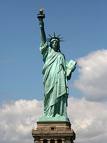
A poem by Emma Lazarus is engraved on a tablet within the pedestal on which the statue stands. The Statue of Liberty has a special significance to the many immigrants that have come to the United States. Emma Lazarus’ poem, especially thelast lines, is still important today as people from all over the world try to come to the United States and make America their home.

The New Colossus
Not like the brazen giant of Greek fame,
With conquering limbs astride from land to land;
Here at our sea-washed, sunset gates shall stand
A mighty woman with a torch, whose flame
Is the imprisoned lightning, and her name
Mother of Exiles. From her beacon-hand
Glows world-wide welcome; her mild eyes command
The air-bridged harbor that twin cities frame.
"Keep ancient lands, your storied pomp!" cries she
With silent lips.
"Give me your tired, your poor,
Your huddled masses yearning to breathe free,
The wretched refuse of your teeming shore.
Send these, the homeless, tempest-tost to me,
I lift my lamp beside the golden door!"
For additional information:
www.libertystatepark.com/emma.htm
www.endex.com/gf/buildings/liberty/libertyfacts.htm
www.suelebeau.com/statueofliberty.htm

Halloween – October 31st
Halloween's origins date back to the ancient Celtic festival of Samhain. The Celts, who lived 2,000 years ago in the area that is now Ireland, the United Kingdom, and northern France, celebrated their new year on November 1. This day marked the end of summer and the harvest and the beginning of the dark, cold winter, a time of year that was often associated with human death. Celts believed that on the night before the new year, the boundary between the worlds of the living and the dead became blurred. On the night of October 31, they celebrated Samhain, when it was believed that the ghosts of the dead returned to earth. In addition to causing trouble and damaging crops, Celts thought that the presence of the otherworldly spirits made it easier for the Druids,
or Celtic priests, to make predictions about the future. For a people entirely dependent on the volatile natural world, these prophecies were an important source of comfort and direction during the long, dark winter.
To commemorate the event, Druids built huge sacred bonfires, where the people gathered to burn crops and animals as sacrifices to the Celtic deities.
During the celebration, the Celts wore costumes, typically consisting of animal heads and skins, and attempted to tell each other's fortunes. When the celebration was over, they re-lit their hearth fires, which they had extinguished earlier that evening, from the sacred bonfire to help protect them during the coming winter.
By A.D. 43, Romans had conquered the majority of Celtic territory. In the course of the four hundred years that they ruled the Celtic lands, two festivals of Roman origin were combined with the traditional Celtic celebration of Samhain. The first was Feralia, a day in late October when the Romans traditionally commemorated the passing of the dead. The second was a day to honor Pomona, the Roman goddess of fruit and trees. The symbol of Pomona is the apple and the incorporation of this celebration into Samhain probably explains the tradition of "bobbing" for apples that is practiced today on Halloween.
By the 800s, the influence of Christianity had spread into Celtic lands. In the seventh century, Pope Boniface IV designated November 1 All Saints' Day, a time to honor saints and martyrs. It is widely believed today that the pope was attempting to replace the Celtic festival of the dead with a related, but church-sanctioned holiday. The celebration was also called All-hallows or All-hallowmas (from Middle English Alholowmesse meaning All Saints' Day) and the night before it, the night of Samhain, began to be called All-hallows Eve and, eventually, Halloween. Even later, in A.D. 1000, the church would make November 2 All Souls' Day, a day to honor the dead. It was celebrated similarly to Samhain, with big bonfires, parades, and dressing up in costumes as saints, angels, and devils. Together, the three celebrations, the eve of All Saints', All Saints', and All Souls', were called Hallowmas.
Source: http://www.history.com/
For additional information:
www.edhelper.com/halloween.htm
http://abcteach.com/directory/seasonalholidays/halloween/
September
Ramadan 
For more than a billion Muslims around the world, including 8 million in North America, Ramadan is a month of blessing marked by prayer, fasting during daylight hours and charity. It is a time for spiritual reflection, prayer; doing good deeds, charity, and spending time with loved ones. It teaches self-discipline, self-restraint generosity and understanding of those less fortunate. Ramadan is the most important of the Muslim festivals. It occurs during the ninth lunar month and during this time
nothing is eaten or drunk between, dawn and dusk.
For more information:
www.suelebeau.com
www.infoplease.com/spot/ramadan1.html
 Labor Day
Labor Day
Labor Day is a national legal holiday that has been observed the first Monday in September for more than 100 years. It grew out of a celebration and parade in honor of the working class by the Knights of Labor in 1882 in New York. In 1884, the Knights held a large parade in New York City celebrating the working class. The parade was held on the first Monday in September. The Knights passed a resolution to hold all future parades on the same day, designated by them as Labor Day.
For more information:
www.dol.gov/opa/aboutdol/laborday.htm

Brazil National Day - September 7th
The independence of Brazil from the Portuguese was officially announced on 7th September 1822. Since then the country proudly celebrates the Independence Day of Brazil with lots of fanfare and excitement. For more information: www.123independenceday.com/brazil/
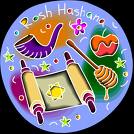
Rosh Hashanah
Jewish people will begin celebrating one of their most important
religious holidays, Rosh Hashanah. It remembers the
creation of the world. In Hebrew, Rosh Hashanah means
the "head of the year." It is also called the Feast of the
Trumpets. The blowing of a ram's horn, a shofar, proclaims
Rosh Hashanah, and summons Jews to religious services.
Sundown marks the beginning of the year 5771.
Jews used the ram's horn as a trumpet in Biblical times to announce the new moon, holidays, and
war. Today, a variety of horns are used, including curved antelope horns.
It marks the beginning of a ten-day period of repentance leading up to Yom Kippur.
For more information: www.infoplease.com/spot/roshhashanah1.html
www.jewfaq.org
 Eid ul-Fitr – September 10th
Eid ul-Fitr – September 10th
Ramadan ends on the morning after the new moon is seen in the sky. This is the first day of the celebration of Eid al -Fitr, which means the breaking of the fast. During this three-day festival, that marks the end of Ramadan, Muslims visit both friends and relatives and give gifts and special cards. They also eat special foods in celebration. The significance of Eid al-Fitr is to celebrate the achievement of enhanced piety. It is a day of forgiveness,
fellowship and unity, a time of giving and sharing.

National Grandparents Day
September
Marian McQuade (now age 92), a housewife in Fayette County, West
Virginia wanted to champion the cause of lonely elderly in nursing homes.
She also hoped to persuade grandchildren to tap the wisdom and heritage
their grandparents could provide. In 1978, President Jimmy Carter
proclaimed that National Grandparents Day would be celebrated every
year on the first Sunday after Labor Day. This year Grandparents Day
falls on Sept. 12th. For more information: www.grandparents-day.com
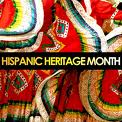
Hispanic Heritage Month - September 15th - October 15th
Hispanic Heritage Month begins on September 15,
the anniversary of independence for five Latin American
countries—Costa Rica, El Salvador, Guatemala, Honduras,
and Nicaragua. In addition, Mexico declared its
independence on September 16 and Chile on September 18.
The term Hispanic, as defined by the U.S. Census Bureau,
refers to Spanish-speaking people in the United States of
any race. For more information:
www.floridahispanicheritage.com/
www.educationworld.com/
www.factmonster.com
www.suelebeau.com
www.crayola.com/calendar/detail.cfm?event_id=161&year=2005&extended=true
www.smithsonianmag.com/people-places/hispanic-heritage-events.html

Citizenship Day/Constitution Day - September 17th
On September 17th every year the anniversary of the US Constitution being completed and signed and approved in 1787 is observed. The intent is to give recognition to those who had become American citizens during the preceding year. The celebrations include pageantry and speeches to impress Americans with the privileges and responsibilities of U.S.citizenship.
For more information:
• www.patriotism.org/citizenship
• www.whitehouse.gov/news/releases/2001/09/20010917-15.html
• www.billofrightsinstitute.org/constitutionday
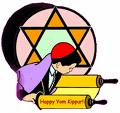
Yom Kippur
Yom Kippur ("Day of Atonement") is the holiest day
of the Jewish year. This is a solemn day devoted to
fasting, prayer and repentance.
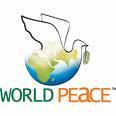
International Day of Peace - September 21th
The General Assembly of the United Nations, as of 7 September 2001, decided that, beginning in 2002, the International Day of Peace should be observed each year on September 21.
For more information: www.un.org/events/peaceday
Multicultural, ESOL and Program Services Department
201 SW 172 Avenue Pembroke Pines, FL 33029 USA
Phone: (754) 321-2950

